Organizational Resilience
Resilience, defined
Organizational resilience is the capacity of an organization to anticipate, prepare for, respond to, and adapt to disruptions while maintaining its core functions and emerging stronger from challenges.
Resilient organizations actively learn from setbacks, adapt their strategies, and build systems that can withstand unexpected shocks, whether they're economic downturns, technological disruptions, natural disasters, or internal changes.
At its core, its about creating a culture and infrastructure that both survives uncertainty, and actually thrives through it by staying flexible, fostering innovation, and maintaining clear communication across all levels.
Organizational resilience is the ability of an organization to absorb and adapt in a changing environment.
-The International Organization for Standardization ISO 22316:2017
Intentional work on improving organizational resilience leads to:
Agility and preparation when anticipating and mitigating risks.
A smoothly operating business flywheel through better coordination and integration of resiliency principles.
Deeper context of dependencies and stakeholders that impact company goals.
Measuring resiliency: Getting the full picture
Want to know if your organization can handle what's coming? Start with the UPlift Resilience assessment to get a baseline resilience score that gives you a comprehensive report across five categories of culture, leadership, strategy, structure, and resources.
You may already be aware of certain KPIs that can act as indicators of risk readiness:
Qualitative
Does the team seek to improve the process, so that each situation is handled even better than ones prior.
Team readiness during disruptions.
Communication effectiveness under pressure.
Quantitative
Resilience Quotient (RQ): A resiliency score that leans on UPlift’s proprietary framework across five categories of characteristics.
Recovery Time Objective (RTO): The maximum tolerable length of time a business process can be down after a disaster. Measured against actual recovery times.
Employee turnover, employee satisfaction, average length of tenure.
What’s your organization’s Resilience Quotient?
Learn your organization’s baseline Resilience Quotient (RQ) – so you can understand where you are and where you need to go, to further your resiliency journey.
Continuous improvement
At the organizational level, resilience can be described as a combination of four cornerstones: monitoring, responding, learning, and anticipating. Each needs its own metrics tracking how well you spot warning signs, respond to disruptions, learn from experiences, and prepare for future challenges.
Operational resilience requires continuous collection, evaluation, and monitoring of internal and external changes. This isn't a one-time assessment—it's ongoing.
How to Improve Organizational Resilience
Start with your people. The first step in building resilience is investing in the people who make up the organization, which means ensuring employee well-being, providing training and mentoring, and promoting mental health. Most workers expect their organization to challenge societal norms, support their holistic health, and be more future-oriented than ever before.
Build it into how you operate. To lead your organization toward becoming more resilient, embed three iterative steps as standard operating practice: anticipate (discern what's happening and prepare), adapt (mobilize and implement actions), and assess (review and reflect to learn).
Create a learning culture. A culture of continuous learning is vital for organizational resilience, as learning from past experiences—both successes and failures—enables organizations to continuously improve. Psychological safety—the belief that it is safe to try something new and fail—ensures workers feel confident to be creative and take different approaches to solving problems.
Communicate relentlessly. Consistently communicate the purpose behind change, as employees respond positively to changes they understand and support. Transparency increases buy-in and adoption of new practices.
Leverage technology smartly. Technology that fuels resilience should build efficiencies while being scalable to meet the needs of an organization today and years down the line. McKinsey research suggests that businesses with robust, mature digital platforms see more than 7% more revenue than their lagging peers during disruptive periods.
Don't forget the fundamentals. Robust risk management practices help organizations identify and mitigate potential risks, ensuring they are prepared for various scenarios. This includes regular risk assessments, contingency plans, and updated strategies.


